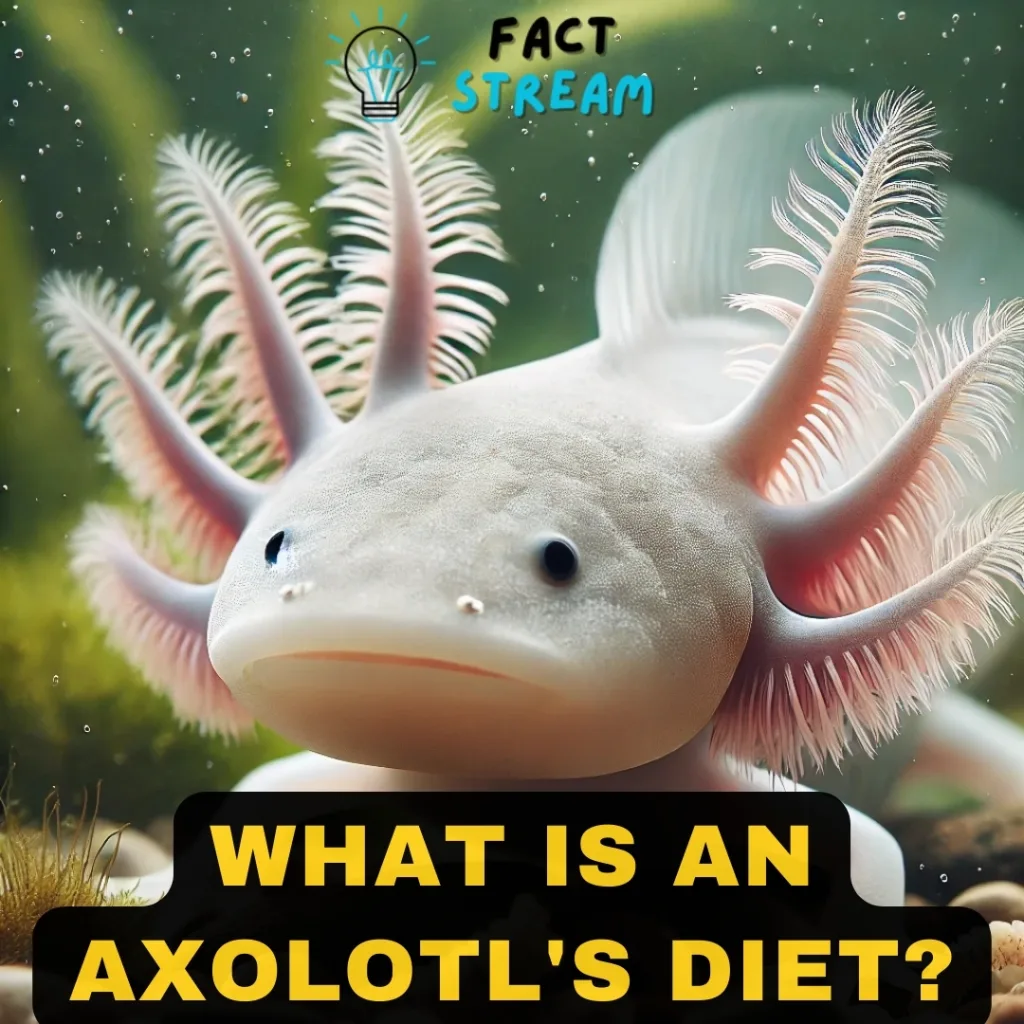What is an Axolotl’s Diet?
A Deep Dive into the Culinary World of Axolotls
Axolotls, those adorable aquatic salamanders with a perpetual smile and feathery gills, are increasingly popular pets. Their unique appearance and fascinating regenerative abilities make them captivating creatures to observe and care for. A critical aspect of axolotl care is providing them with a proper diet to ensure their health and well-being. So, what do axolotls eat? Let’s explore their dietary needs and preferences in both the wild and captivity.
Wild Axolotl Diet: Opportunistic Carnivores
In their natural habitat, the lakes of Xochimilco and Chalco in Mexico, axolotls are carnivores, meaning they primarily eat meat. Their diet consists of a variety of small aquatic creatures they can easily capture and swallow whole. Their small, underdeveloped teeth are designed for gripping rather than tearing or chewing, so axolotls rely on a powerful suction mechanism to consume their prey.
To feed, an axolotl will quickly open its wide mouth, creating a vacuum force that draws in water and anything nearby, including its targeted prey. They are opportunistic feeders, meaning they will eat just about anything they can catch and fit into their mouths. Their diet in the wild includes:
- Worms: Earthworms are a staple in their diet, providing essential nutrients.
- Insects: Axolotls eat various insect larvae, including mosquito larvae.
- Small Crustaceans: They consume small crustaceans like daphnia and brine shrimp.
- Mollusks: Snails and other small mollusks are also part of their diet.
- Small Fish: Axolotls may eat small fish, especially if other food sources are scarce.
- Tadpoles: Tadpoles are another tasty treat for axolotls.
Sadly, axolotls have also been observed engaging in cannibalism, sometimes eating their own siblings if other food is unavailable. This behavior highlights their adaptability and resourcefulness in challenging environments.
Feeding Axolotls in Captivity: Replicating Nature’s Bounty
As responsible pet owners, we aim to provide our captive axolotls with a diet that closely resembles their natural food sources. A balanced and varied diet is crucial for their health, growth, and overall well-being.
Here’s a breakdown of suitable food options for captive axolotls:
Live Food
- Earthworms: Nightcrawlers, red wigglers, and other earthworm varieties are excellent staple foods, providing high protein and essential nutrients. Choose earthworms from organic sources to avoid potential pesticide contamination.
- Bloodworms: Bloodworms are a nutritious treat, high in protein and fat, but should be fed in moderation due to their high-fat content.
- Blackworms: Blackworms are another good option, offering a balance of protein and fat.
- Brine Shrimp: Brine shrimp are an excellent food source for baby axolotls and can be a treat for adults.
- Daphnia: These tiny crustaceans are a good supplementary food, especially for juvenile axolotls.
- Ghost Shrimp: Ghost shrimp can be fed as a treat.
Important Note: While live food is stimulating for axolotls and mimics their natural hunting behavior, it can carry parasites or diseases. Source live food from reputable suppliers and consider quarantining them before feeding them to your axolotl.
Prepared Food
- Axolotl Pellets: High-quality commercial axolotl pellets formulated with essential nutrients are a convenient option. Look for soft pellets with at least 40% protein and less than 10% fat, free from artificial colors, flavors, and preservatives.
- Salmon Pellets: Soft salmon pellets (5mm for adults, 3mm for juveniles) are an alternative to axolotl pellets, offering a similar nutritional profile.
- Frozen Foods: Frozen bloodworms, brine shrimp, and other frozen food options can be a convenient and safe alternative to live food. Thaw frozen food completely before feeding it to your axolotl.
Foods to Avoid
- Fish with Hard Exoskeletons: Crickets, waxworms, and hornworms have hard exoskeletons that can be difficult for axolotls to digest, potentially causing digestive issues.
- Fatty Foods: Tubifex worms and whiteworms are high in fat and low in nutritional value, so they should be avoided.
- Human Food: Do not feed your axolotl any human food. Their digestive systems are not designed to process human food, which can lead to health problems.
Feeding Frequency and Quantity: A Matter of Age and Appetite
The feeding frequency and quantity for your axolotl will depend on their age and individual appetite.
- Baby Axolotls (Under 4 inches): Feed baby axolotls daily with small, live foods like brine shrimp, daphnia, and chopped blackworms.
- Juvenile Axolotls (4-8 inches): Feed juveniles every other day with a variety of foods, including earthworms, bloodworms, blackworms, and small pellets.
- Adult Axolotls (Over 8 inches): Feed adults two to three times a week with a combination of earthworms, pellets, and occasional treats like bloodworms or ghost shrimp.
General Guidelines:
- Offer as much food as your axolotl will consume within 5-10 minutes.
- Remove any uneaten food promptly to maintain water quality.
- Monitor your axolotl’s body condition. They should have a plump body but not be overly obese.
- Adjust the feeding frequency and quantity based on your axolotl’s individual appetite and growth rate.
Substrate Considerations: To Gravel or Not to Gravel
The choice of substrate for your axolotl’s tank can impact their feeding habits. While some axolotl keepers use gravel, it’s important to be aware of the potential risks. Axolotls are known to accidentally ingest gravel while feeding, which can lead to gastrointestinal blockages and other health problems.
Here are some substrate considerations:
- Bare-bottom Tank: A bare-bottom tank is the safest option, eliminating the risk of gravel ingestion.
- Fine Sand: If you prefer a substrate, use fine sand with smooth particles smaller than 1mm. This type of sand is less likely to cause impaction if ingested.
- Large Smooth Pebbles: For adult axolotls, you can use smooth pebbles that are larger than the axolotl’s head to minimize the risk of ingestion. Avoid gravel with sharp edges.
Monitoring is Key: Regardless of the substrate you choose, closely monitor your axolotl’s behavior and eating habits. If you notice any signs of digestive issues, such as loss of appetite, lethargy, or bloating, consult a veterinarian experienced in axolotl care.
Conclusion: Nourishing the Fascinating Axolotl
By understanding the dietary needs of axolotls, we can provide them with the proper nutrition to thrive in captivity. A varied diet consisting of high-quality protein sources, appropriate feeding frequency, and careful consideration of substrate choices will help ensure your axolotl lives a long, healthy, and happy life.


